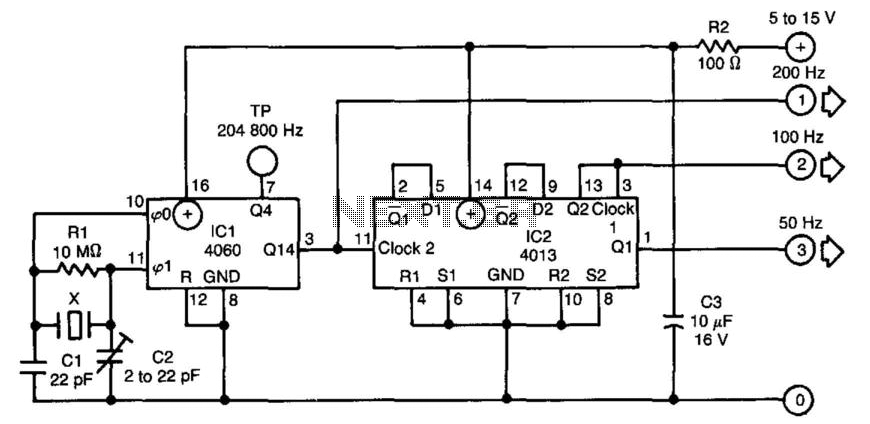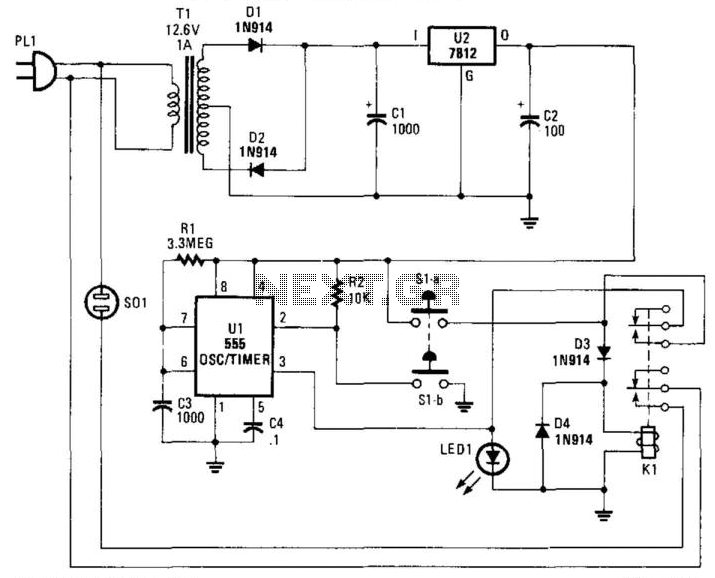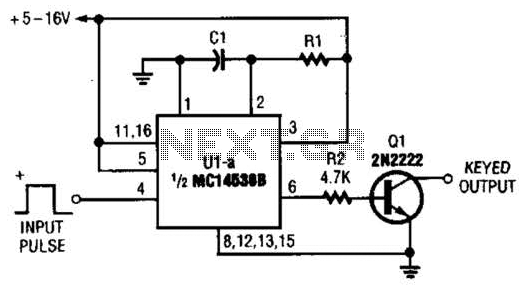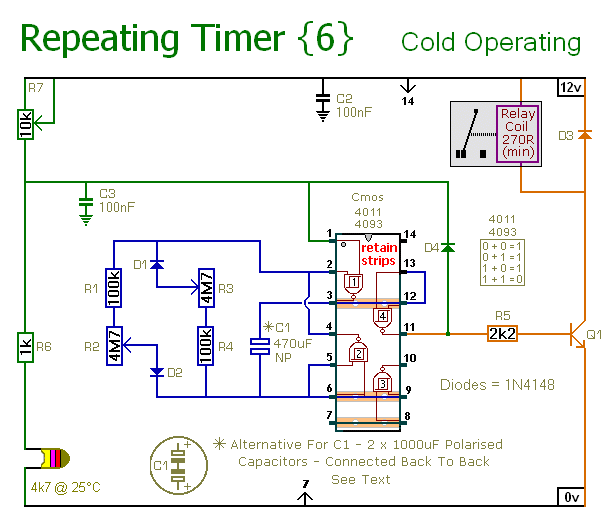
Economical Crystal Time Base

The time base circuit described above generates 50, 100, or 200 Hz signals using an inexpensive crystal oscillator cut for 3.2768 MHz, which is commonly utilized in microprocessor applications. The circuit operates on a power supply range of 5 to 15 V, drawing a current of 0.05 to 2.5 mA.
The described time base circuit employs a crystal oscillator as its frequency source. The crystal, tuned to 3.2768 MHz, serves as a stable frequency reference. The circuit utilizes frequency division techniques to achieve the desired output frequencies of 50 Hz, 100 Hz, and 200 Hz. This is typically accomplished using a series of flip-flops or counters that divide the input frequency down to the required output frequencies.
The power supply specifications of 5 to 15 V indicate that the circuit is designed for versatility, allowing it to be integrated into various systems that may operate at different voltage levels. The current requirement of 0.05 to 2.5 mA suggests that the circuit is energy-efficient, making it suitable for battery-operated devices and low-power applications.
In terms of components, the circuit may include resistors, capacitors, and possibly additional integrated circuits (ICs) for signal conditioning and output buffering. The output stage may involve transistors or logic gates to ensure the generated signals are compatible with other digital circuits or microcontrollers.
Overall, this time base circuit is a practical solution for generating precise timing signals in a variety of electronic applications, benefiting from the stability of the crystal oscillator and the efficiency of its design. The above time base circuit will provide 50-, 100-, or 200-Hz signals from an inexpensive crystal cut for 3.27 6 8 MHz, a common crystal used for microprocesser works. It requires a power supply of 5 to 15 V at 0.05 to 2.5 mA.
The described time base circuit employs a crystal oscillator as its frequency source. The crystal, tuned to 3.2768 MHz, serves as a stable frequency reference. The circuit utilizes frequency division techniques to achieve the desired output frequencies of 50 Hz, 100 Hz, and 200 Hz. This is typically accomplished using a series of flip-flops or counters that divide the input frequency down to the required output frequencies.
The power supply specifications of 5 to 15 V indicate that the circuit is designed for versatility, allowing it to be integrated into various systems that may operate at different voltage levels. The current requirement of 0.05 to 2.5 mA suggests that the circuit is energy-efficient, making it suitable for battery-operated devices and low-power applications.
In terms of components, the circuit may include resistors, capacitors, and possibly additional integrated circuits (ICs) for signal conditioning and output buffering. The output stage may involve transistors or logic gates to ensure the generated signals are compatible with other digital circuits or microcontrollers.
Overall, this time base circuit is a practical solution for generating precise timing signals in a variety of electronic applications, benefiting from the stability of the crystal oscillator and the efficiency of its design. The above time base circuit will provide 50-, 100-, or 200-Hz signals from an inexpensive crystal cut for 3.27 6 8 MHz, a common crystal used for microprocesser works. It requires a power supply of 5 to 15 V at 0.05 to 2.5 mA.





